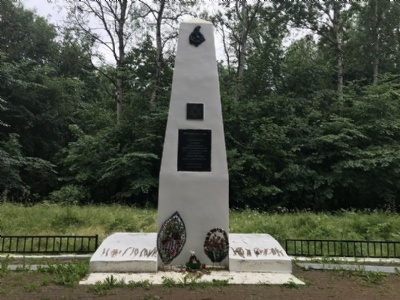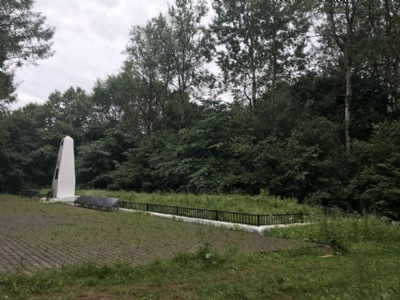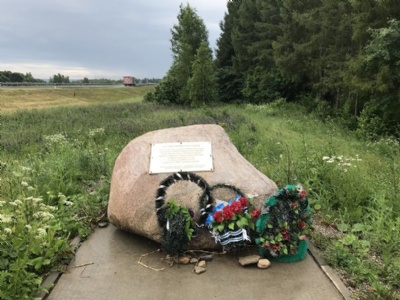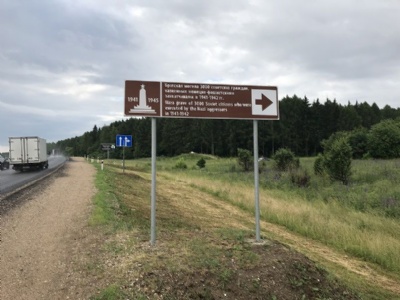Smolensk - Vyazovenskaya
On July 16, 1941, Smolensk was occupied by the Germans and sporadic executions of jews took place in the wake of the occupation. Of the approximately 13,000 Jews who lived in the city at the outbreak of the Second World War, more than 10,000 fled east before the German’s occupied the city. At the turn of the month July/August 1941, all Jews over ten years old were forced to wear a yellow armband and a sewn-on yellow star on their clothes. In early August 1941, about 2,000 Jews were forced to move to a ghetto set up in a suburb called Sadki in northeastern Smolensk. Adjacent to the ghetto was also the Jewish cemetery.
In addition to Jews from Smolensk, Jews from Belarus were also sent to the ghetto. The ghetto was surrounded by barbed wire fences and consisted of about 70 substandard houses whose former residents were forced to move out. Jews who were healthy enough were forced to perform slave labor and when they could no longer work they were executed. During the winter of 41/42, about 200 Jews died of cold, starvation or disease, mostly children and old.
On the night of 15 (or 16) July 1942, the germans began to dismantle the ghetto. About 2,000 Jews were taken by lorries to a grove in Vyazovenskaya just over two kilometers north of the ghetto. When the trucks arrived, the Jews were forced to undress and step into a large ditch that had been dug up for the occasion. The Jews were then shot by SS killing Squads and Lithuanian collaborators. The truck then returned back to the ghetto to retrieve more Jews until the ghetto was emptied. There are also testimonies that the Germans used gas wagons where Jews were murdered by the engine exhaust from the truck while been locked up in the cargo space. When the truck arrived at the graves the people were already dead. Further executions during the war were carried out on the site and a total of about 3,000 Jews were murdered on the site.
Current status: Monument (2019).
Location: 54°49'19.67"N 32°04'55.00"E
Get there: Car.
Follow up in books: Arad, Yitzhak: Holocaust in the Soviet union (2009).




The Mass grave and the monument are located about 200 meters from the main road (Minsk – Moscow) and a sign informs motorists and others about the place. An interesting detail is that the text doesn’t mention the fact that those who were murdered were Jews but are referred as Soviet citizens. This was common during the communist era when the regime reluctantly mentioned religious or ethnic groups by their actual names but bundled them together as Soviet citizens. All people in the Soviet union were categorized as Soviet people regardless of ethnic or religious affiliation. After the fall of the Soviet Union, most monuments have been revised and the victims named on the basis who they were. Although the victims were Soviet citizens, they were also Jews who were murdered on a racist basis. But by omitting the religious identity of the victims, they have also chosen not to highlight the ideological motive as the main reason why these Soviet citizens were actually murdered.